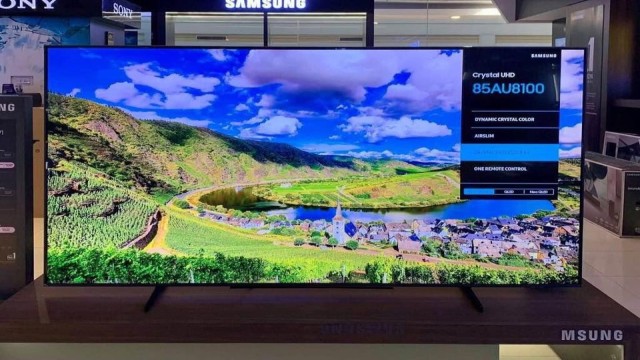Tech giant Samsung has unveiled a glimpse into the future of television with the world's first transparent MicroLED displays, stealing the show at the Consumer Electronics Show (CES) 2024. This groundbreaking technology marks a significant leap forward in display innovation, offering a revolutionary viewing experience that seamlessly blends the physical and digital worlds.
While details on pricing and availability remain under wraps, Samsung showcased three distinct variations of its transparent MicroLED concept. Two prototypes boast "translucent glass" capabilities, cleverly concealing any distracting elements behind the screen while maintaining transparency. The crown jewel, however, is the A model, featuring a MicroLED screen that boasts an almost glass-like transparency, further accentuated by its innovative frameless design.
Describing the experience, Engadget reports that content displayed on the MicroLED screen appears to levitate, creating the illusion of a holographic projection or an ethereal image. This captivating effect is further amplified by the TV's remarkable thinness, measuring a mere one centimeter without any supporting framework.
Beyond its visual prowess, the MicroLED technology also delivers exceptional picture quality. The OLED panel's unparalleled pixel density translates to stunning vibrancy and razor-sharp clarity, while the MicroLED's superior brightness minimizes the impact of ambient light, ensuring a consistently immersive viewing experience.
"Due to the elevated luminosity of the cutting-edge MicroLED TV panel, the likelihood of environmental light from the television impacting the observer is considerably reduced compared to OLED TVs," a Samsung spokesperson explained.
While the allure of these transparent marvels is undeniable, the price tag remains a formidable barrier to entry. Samsung's current 110-inch "opaque" MicroLED TVs already command a hefty $1.5 million price tag, suggesting that widespread adoption of the transparent technology might require significant advancements in affordability.
Despite the current cost constraints, Samsung's transparent MicroLED displays represent a pivotal moment in television history. This innovative technology not only pushes the boundaries of visual fidelity but also opens up a plethora of possibilities for immersive entertainment, interactive experiences, and groundbreaking design applications. As production costs decrease and technology matures, we can expect these transparent displays to gradually infiltrate our homes, transforming the way we interact with the digital world.
The future of television is transparent, and Samsung has taken the first bold step towards realizing this vision. CES 2024 has served as a glimpse into this captivating future, leaving us eager to witness the evolution of this transformative technology.































Comment: